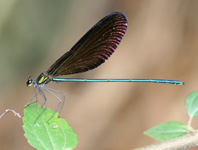Abstract
The tree-climbing mangrove crab Aratus pisonii (H. Milne Edwards, 1837) (Brachyura, Sesarmidae) is considered to have a transisthmian distribution, due to its presence in mangroves of the Western Atlantic as well as the Eastern Pacific. We here present evidence, based on the morphologies of male gonopods and on genetic data, that populations from these two coastlines are morphologically and genetically distinct and require the description of a new species, Aratus pacificus n. sp., as the sister-species of Aratus pisonii. The corresponding speciation event can be regarded as the outcome of differentiation following the closure of the Isthmus of Panama. As these coastal brackish species were probably among the last ones to become separated, the speciation can thus be dated to a time frame of no more than 3.1 million years.

